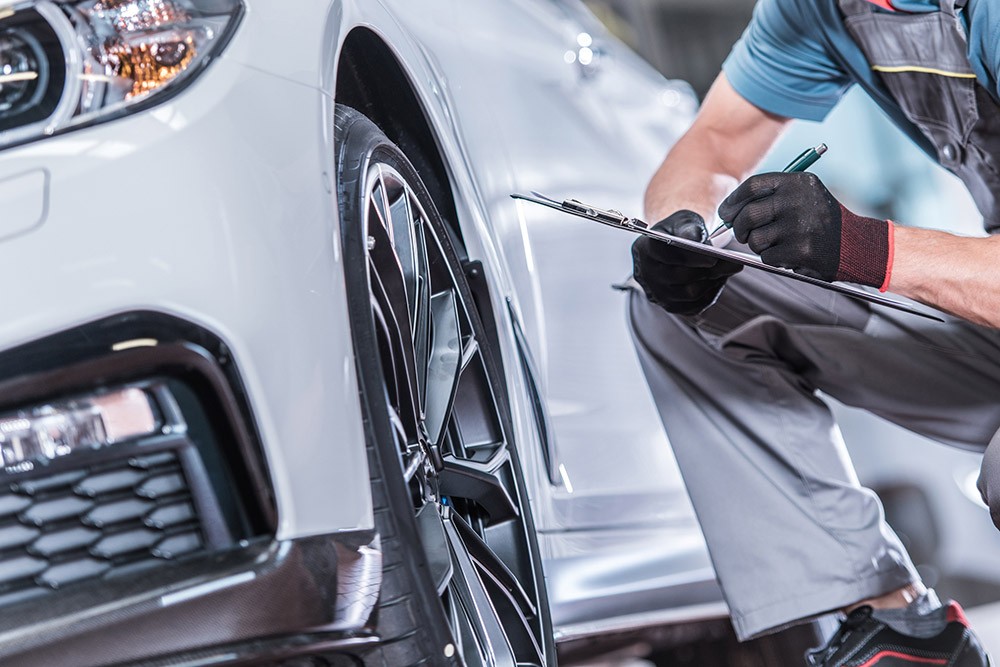
Summer doesn’t just test your patience—it tests your car’s endurance, too. In fact, the sun can turn your car into an oven in minutes, zapping its vital working components.
According to the National Weather Service, even when it’s just 73°F outside, the inside of your car can soar to 100°F in just 25 minutes. With numbers like that, the heat can add extra stress under the hood as well as in the vehicle cabin.
Below are maintenance tips to help you car beat the heat this summer:
Maintain your car’s cool. Extreme heat can push your engine's cooling system to its max.
And because the cooling system’s job is to protect the engine from overheating, you want to make sure your radiator and cooling system are in top condition. Ask your service advisor if it’s time to flush and replace engine fluids–especially if you intend to venture on a long road trip.
Having your coolant systems flushed and replaced regularly not only helps prevent your car from overheating, it also helps extend the longevity of your car’s engine.
Check fluid levels. Summer heat can cause engine oil, transmission fluid, brake fluid, and coolant to evaporate more rapidly, potentially harming your vehicle if not checked or topped off accordingly.
Most fluids act as a cooling agent by carrying heat away from critical parts. When fluid levels are low, they aren’t as effective at keeping your car’s parts cool, making the possibility of overheating more likely.
To avoid overheating and getting stranded away from home, have your mechanic check all vehicle fluids to ensure proper levels and to determine if they are working effectively.
Critical fluids–engine oil, brake oil and radiator fluid– break down over time and need to be replaced. Hot summer temperatures exacerbate the problems.
Test the battery. Heat can zap the life from your car’s battery. High temperatures can cause the battery fluid to evaporate and accelerate corrosion on terminals.
Check the battery for signs of damage or leaks, ensure the terminals are clean, and make sure it's properly secured. If your battery is more than three years old, consider having it tested by your mechanic.
Weak batteries can go bad overnight when you travel from hot zones to cold zones and back again.
Monitor tire wear and inflation. Your tires are another must-check this summer. Just as the hot asphalt can burn your bare feet and your dog’s paws, scorching surfaces accelerate wear on your vehicle’s tires.
High surface temperatures cause the tire rubber to deteriorate faster over time. This leads to excessive tread wear, reduced traction, and an increased risk of blowouts.
Also, as temperatures rise, so does tire pressure. Over-inflated tires can reduce traction and increase the risk of a blowout, especially on hot asphalt.
Inspect the air conditioning system. Don’t spend the dog days of summer without a working air conditioning system. An AC system that isn’t blowing cold air or one that is making odd noises should be inspected by a mechanic. A simple recharge of the refrigerant might be all that’s needed, or you may have a more serious issue like a failing compressor or electrical problems.
Replace wiper blades. Reflecting sun rays and high temperatures can accelerate the damage done to your car’s wiper blades.
If you notice streaking and smearing on your windshield when using your wiper blades, they could be cracked and brittle, losing their effectiveness. Getting them replaced is an easy solution to ensure safe driving.
Are you traveling to areas where summer rains are common? Don’t let old wiper blades decrease your visibility and driving safety.
Protect your vehicle’s interior. Hot summer sun can fade and crack upholstery and damage dashboard vinyl. It also can overheat dashboard screens and cause them to shut down–a safety hazard if you're using navigation and driving alerts.
Ask your service advisor to recommend a windshield sunshade or a car cover when parked. Also, consider covering the back of your dashboard screen to protect it against direct sunlight.
Apply leather and vinyl conditioner to protect surfaces from harmful UV rays.
Your summer vehicle safety and maintenance checklist:
- Check oil, coolant and brake fluids before heading out of town.
- Fill wiper washer fluid for those unexpected summer rains.
- Inspect all tires for wear–don’t forget the spare! Check tread depth and use a pressure gauge to check air pressure. Worn tires don’t grip well, especially on newly slick roads after a long dry spell.
- Inspect the jack. You can avoid hours of frustration on the roadside by having the right tools so you—or a passerby—have the emergency tools needed if stranded.
- Check alignment before leaving on summer road trips. Poor alignment can ruin new tires and create steering problems.
- Call your service advisor if you notice engine performance problems such as poor fuel economy, rough idling, slow acceleration or hard starts.
- Summer sun can harden and crack wiper blades. Replace them before the first rains—otherwise you may find them on back-order.
- Check that headlights and taillights are operating properly. Are the high beams directed at the proper angle? Properly aligned headlights are important when driving winding mountain roads.
- Get the engine drive belts checked for wear and proper adjustment.
- Doublecheck child seats and attachments for proper fit and function.
Copyright © 2024 by Sensible Driver. All rights reserved.